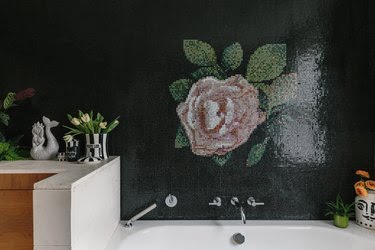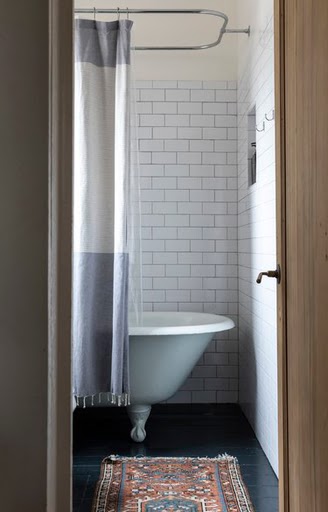Quck answer
Cleaning a bathtub is a simple process that requires a few basic steps. First, gather your cleaning supplies, such as a bathtub cleaner, sponge, and scrub brush. Next, remove any items from the bathtub, such as shampoo bottles or bath toys. Then, wet the bathtub surface and apply the cleaner, making sure to cover all areas. Use the sponge or brush to scrub the surface, paying extra attention to any stains or grime. Finally, rinse the bathtub thoroughly with water and dry it with a clean towel. Regularly cleaning your bathtub will help keep it hygienic and looking its best.
Regularly cleaning a bathtub is crucial for keeping a household in good condition. Over time, various issues such as soap scum buildup and hard water deposits can occur. By cleaning the bathtub on a weekly basis, these problems can be minimized, reducing the need for intensive stain removal and deep cleanings. It is important to know the most effective approach for both maintenance cleaning and deep cleaning.
The Basics of Bathtub Cleaning
Weekly bathtub cleaning involves using a mild cleanser to remove the buildup of soap, body oils, and other substances that accumulate over time. By keeping the tub clean, issues like discoloration and mineral deposits can be avoided or minimized. While this type of cleaning does not have to be time-consuming, it does require focus and basic supplies. The cleaning frequency may also depend on how frequently the bathroom is used, as some bathtubs may require more care than others.
Most bathtubs can be cleaned in the same way during a maintenance cleaning session, without the need for special cleaners or supplies. For a natural cleaning solution, American Standard suggests using a spray bottle filled with a mixture of equal parts white vinegar and warm water. Before spraying the tub, leave a couple of inches of water in it, then let the solution sit for 20 to 30 minutes before wiping it down and rinsing. This quick and inexpensive method is effective, but it is important to use a soft cloth.
Alternatively, a mild dish soap, warm water, and a sponge can be used to clean the tub. This method is safe and helps prevent soap scum buildup. Thorough rinsing is essential to avoid a slippery tub. There are also various standard bathroom cleaners available on the market that effectively remove grime, dirt, and soap scum from tub surfaces. When using such products, it is important to choose one that is suitable for the specific tub surface (porcelain, acrylic, fiberglass, etc.) and to follow the instructions for best results.
If the tub is surrounded by tile or sits on a tiled deck, a different cleaning approach may be necessary. The Tile Council of North America (TCNA) advises against using vinegar on grout lines, as the acid in vinegar can react with the cement in most grouts and cause them to deteriorate. In this case, it is recommended to use a different type of cleaner, such as Spic and Span or Mr. Clean, as suggested by the TCNA.

tile floral wall mural above bathtub
Image Credit:
Alex Reyto
Thoroughly Cleaning a Bathtub
While regular cleaning should keep a bathtub in good condition, a deeper cleaning may be necessary from time to time. One effective method is to pretreat the tub by sprinkling baking soda over the surface and then saturating the area with a mixture of equal parts white vinegar and warm water. This combination provides extra scrubbing power and is especially useful for bathtubs that require more than just a basic cleaning. As with other methods, it is important to use a nonscratch sponge or cloth for scrubbing and to rinse the tub thoroughly.
Ready-made bathroom cleaning products are also a good option, especially for dealing with stubborn problems in the bathtub, such as mold, mildew, or stubborn dirt. Tilex and similar cleaning brands use bleach to kill mold and mildew, as well as whiten grout and remove soap scum. These products work well on caulked areas and eliminate fungus buildup on tile and porcelain tub surfaces. OxiClean can also be a good choice, especially for textured tub floors and colored grout. It is important to let OxiClean soak in for a while to achieve the best results.
Formula 409 all-purpose cleaner is a brand that can be used on most acrylic or fiberglass tubs. Another product that works well for fiberglass and acrylic materials is Gel-Gloss. It not only cleans the surface gently but also removes oxidation issues, scratches, and water spots. Additionally, it provides a nice wax finish that helps protect these materials and restore a clean bathtub surface.
Delta recommends using products such as Iron OUT rust stain remover and dishwashing detergent on acrylic tubs. It also advises against using brands like original Pine-Sol and Simple Green all-purpose cleaner on this type of material. The company suggests checking the label of any cleaner being considered to ensure that it does not warn against use on acrylic, ABS, polystyrene, or plastic.
Removing Stubborn Stains from the Tub
When regular and deep cleaning fail to remove a stain, stronger measures are needed. Most difficult stains on a porcelain tub can be treated with a paste made from baking soda and hydrogen peroxide. Let the paste sit for about an hour and then wipe it off with a soft towel or washcloth. Repeat these steps if necessary for particularly stubborn stains. Keep in mind that baking soda may require some vigorous scrubbing, and an old toothbrush can be very effective for grouted areas that need extra attention.
Different cleaners work for different situations, so it is important to choose the right product for the specific need. For example, CLR is a popular choice for tackling hard water deposits and limescale, and it can be safely used on various bathtub materials. LIME-A-WAY is another option for these issues. However, caution should be exercised with any surrounding materials, if applicable. For instance, neither LIME-A-WAY nor CLR are recommended for use on colored grouts or natural stone.

a bathroom with subway tile, a small throw rug, and a claw-foot tub with a gray and white curtain
Image Credit:
Jacqueline Marque
Best Practices for Cleaning Bathtubs
Kohler offers a range of bathroom cleaning products that are specifically designed for different tub materials, making it easier to choose the right one for the job. However, in general, it is a good practice to test cleaners on a small area first. Be sure to read the product instructions thoroughly before use and wear gloves to protect your hands from any chemicals. It is also important to have proper ventilation when using these products in an enclosed space, such as a bathroom.
Many tub materials can get scratched when using aggressive cleaning supplies. Avoid materials like steel wool, brushes with stiff bristles, and sponges with abrasive surfaces. Instead, opt for old towels, microfiber cloths, or nylon sponges to clean tub surfaces. Finally, never mix cleaning supplies such as bleach and ammonia or bleach and vinegar, as this can create dangerous and toxic fumes.

